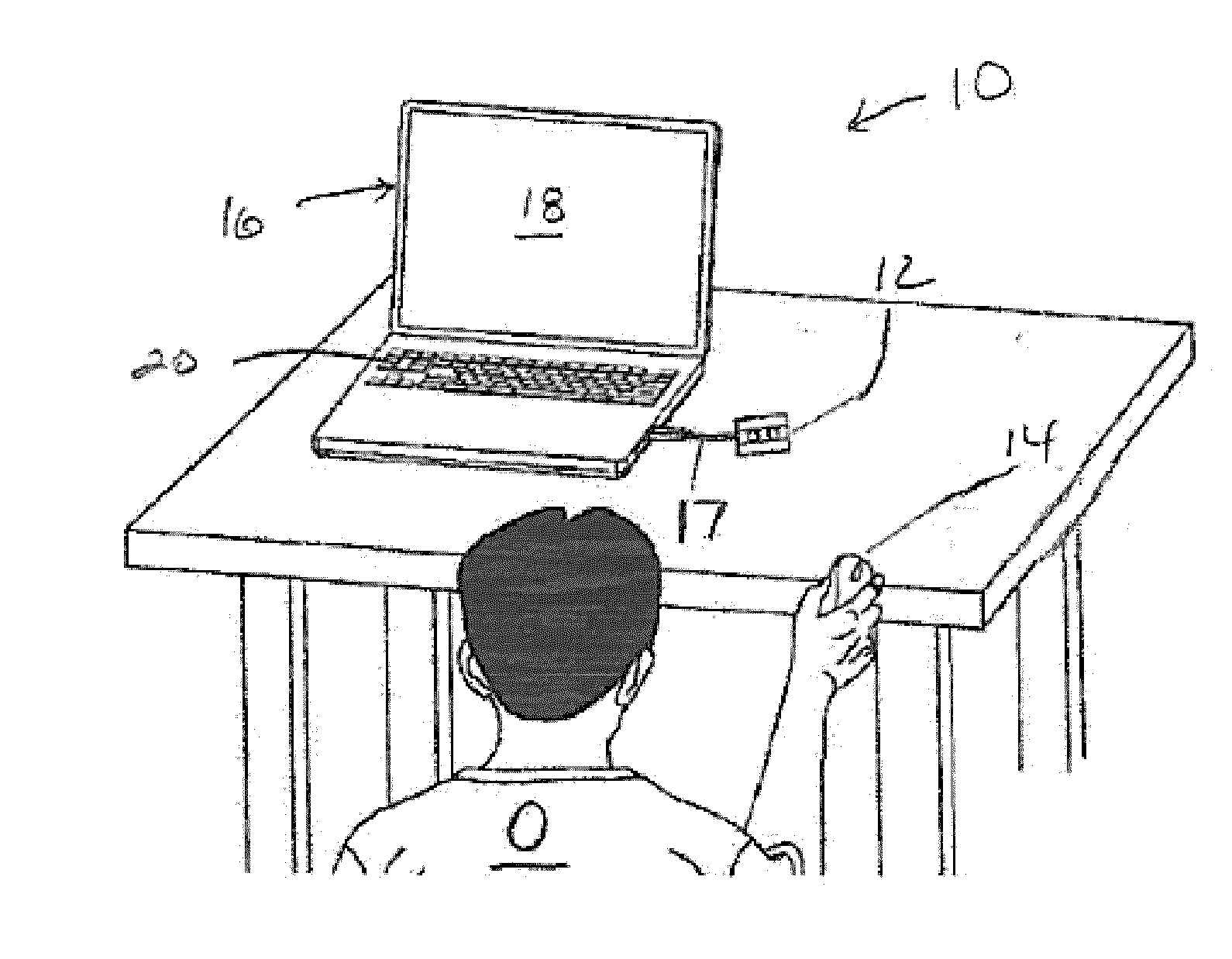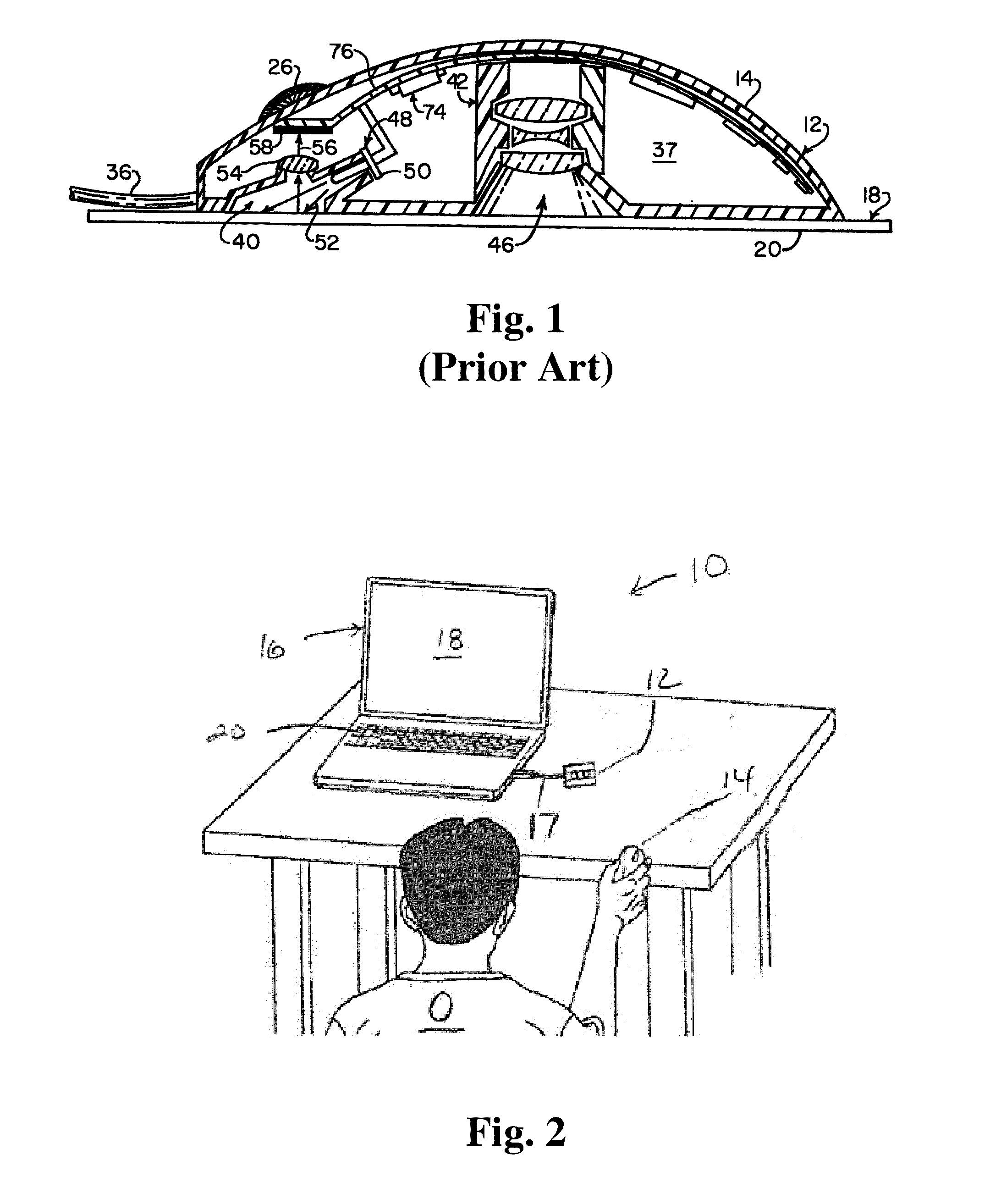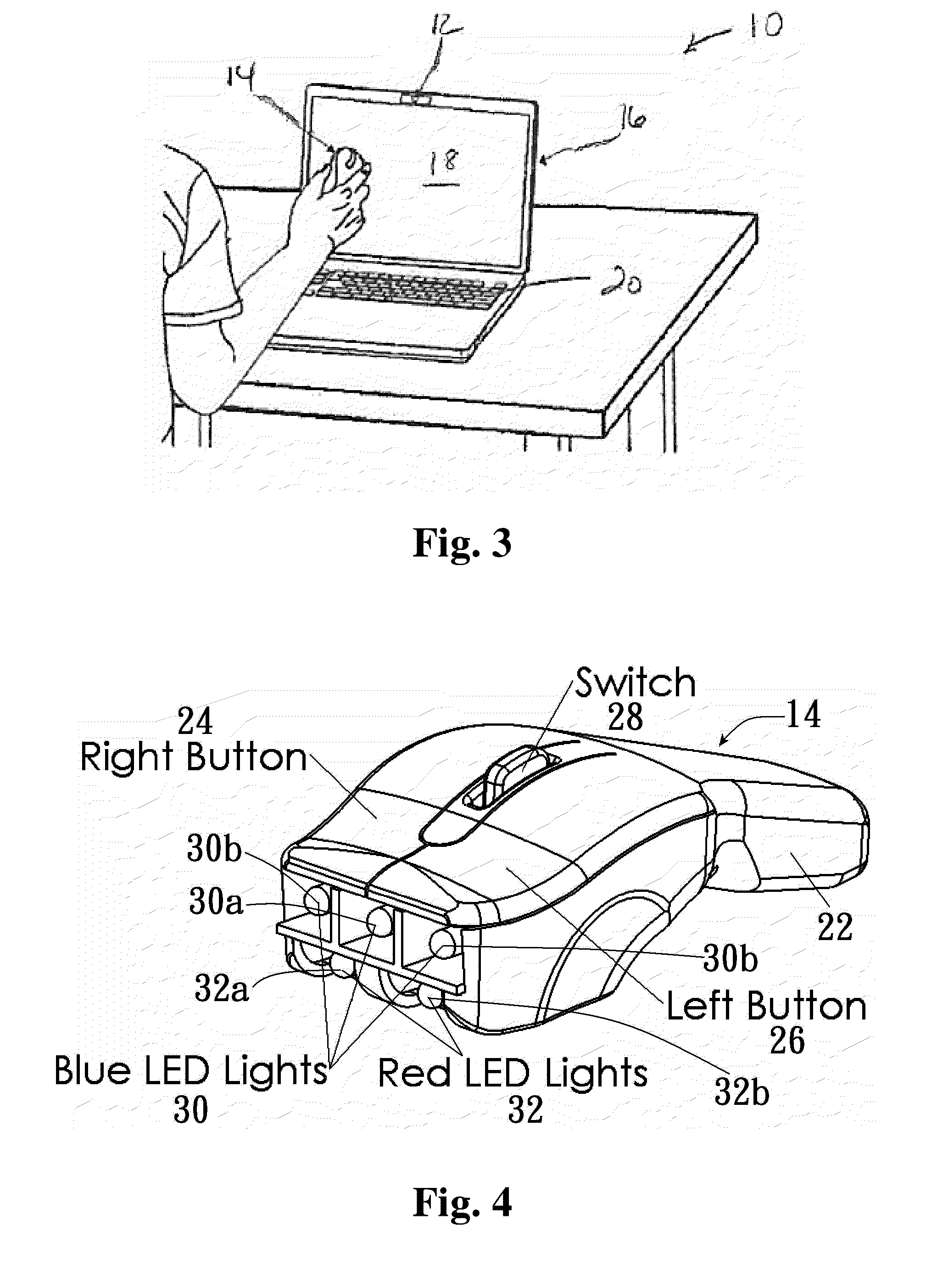Three-dimensional pointing using one camera and three aligned lights
a three-dimensional pointing and three-dimensional technology, applied in the field of humancomputer interaction systems, can solve the problems of difficult to achieve the use of conventional optical mouse, difficult to achieve the use of alternative pointing/input devices such as touchpads or trackballs, and the use of drawing programs without a computer mouse is difficult if not impossibl
- Summary
- Abstract
- Description
- Claims
- Application Information
AI Technical Summary
Benefits of technology
Problems solved by technology
Method used
Image
Examples
Embodiment Construction
[0036]In the following detailed description of the illustrated embodiments, reference is made to the accompanying drawings that form a part hereof, and in which is shown by way of illustration, specific embodiments in which the invention may be practiced. These embodiments are described in sufficient detail to enable those skilled in the art to practice the invention. Also, it is to be understood that other embodiments may be utilized and that process, reagent, materials, software, and / or other changes may be made without departing from the scope of the present invention.
[0037]The present disclosure relates to a human-computer interaction system 10 that allows 2D and 3D pointing operations in air mode, i.e. without any requirement for translating a pointing device over a surface to measure a distance displacement thereof. The system 10 comprises a specialized pointing / input device 14, an imaging device 12, and at least one light tracking computer program. The imaging device 12 may b...
PUM
 Login to View More
Login to View More Abstract
Description
Claims
Application Information
 Login to View More
Login to View More - R&D
- Intellectual Property
- Life Sciences
- Materials
- Tech Scout
- Unparalleled Data Quality
- Higher Quality Content
- 60% Fewer Hallucinations
Browse by: Latest US Patents, China's latest patents, Technical Efficacy Thesaurus, Application Domain, Technology Topic, Popular Technical Reports.
© 2025 PatSnap. All rights reserved.Legal|Privacy policy|Modern Slavery Act Transparency Statement|Sitemap|About US| Contact US: help@patsnap.com



